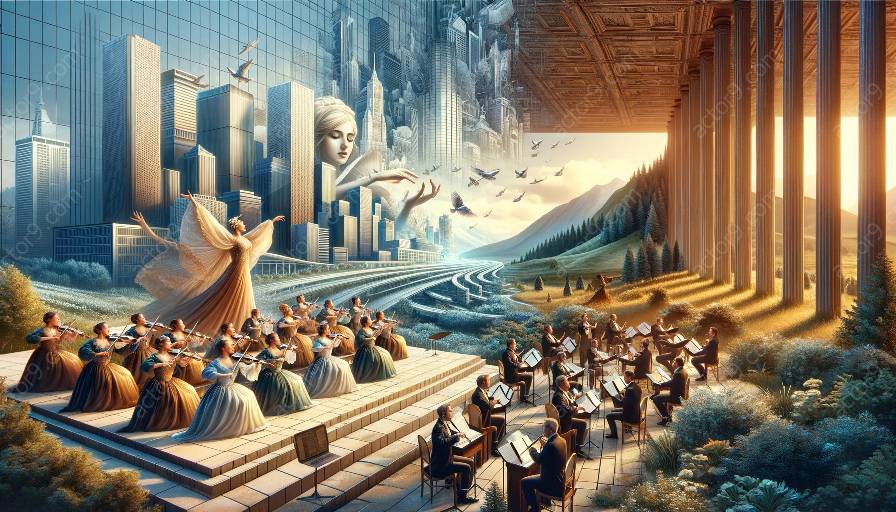Opera, as a traditional art form, has been intersecting with modern technology in innovative ways. This intersection not only impacts the contemporary society's perception of opera but also transforms the opera performance experience. One of the most influential modern technologies that have affected opera is virtual reality (VR) and augmented reality (AR).
Opera in Contemporary Society: Opera has been a staple of performing arts for centuries, captivating audiences with its captivating storytelling, music, and theatrical performances. However, to remain relevant in contemporary society, opera has embraced modern technology to enhance its accessibility and appeal to diverse audiences. In this context, the integration of VR and AR has opened up new possibilities for engaging contemporary audiences with the art form.
Impact of Modern Technology on Opera Performances: The incorporation of VR and AR in opera performances has revolutionized the way audiences experience and engage with the art form. VR allows opera enthusiasts to immerse themselves in virtual opera environments, providing an unprecedented sense of presence and intimacy with the performers. On the other hand, AR has the potential to overlay digital enhancements onto live opera performances, enriching visual and auditory elements, and offering a multi-sensory experience.
Enhancing Audience Engagement: With the use of VR and AR, opera houses can reach wider audiences beyond geographical constraints. Virtual opera experiences can be accessed globally, breaking down barriers to participation and diversifying the opera fanbase. Furthermore, the interactive and customizable nature of VR and AR technologies adds an element of personalization to the opera experience, allowing audiences to tailor their viewing and listening preferences.
Challenges and Opportunities: While the integration of VR and AR in opera presents exciting opportunities, it also poses challenges such as production costs, technological infrastructure, and ensuring artistic integrity. However, the potential to create innovative multimedia productions and educational initiatives through VR and AR opens up new avenues for opera companies to engage with audiences and perpetuate the art form's relevance in the digital age.
Conclusion: The intersection of opera with modern technology, particularly VR and AR, has the potential to redefine the perception of opera in contemporary society and revolutionize the opera performance experience. By embracing these advancements, opera stands to captivate new audiences, foster artistic innovation, and preserve its cultural significance in an ever-evolving technological landscape.































